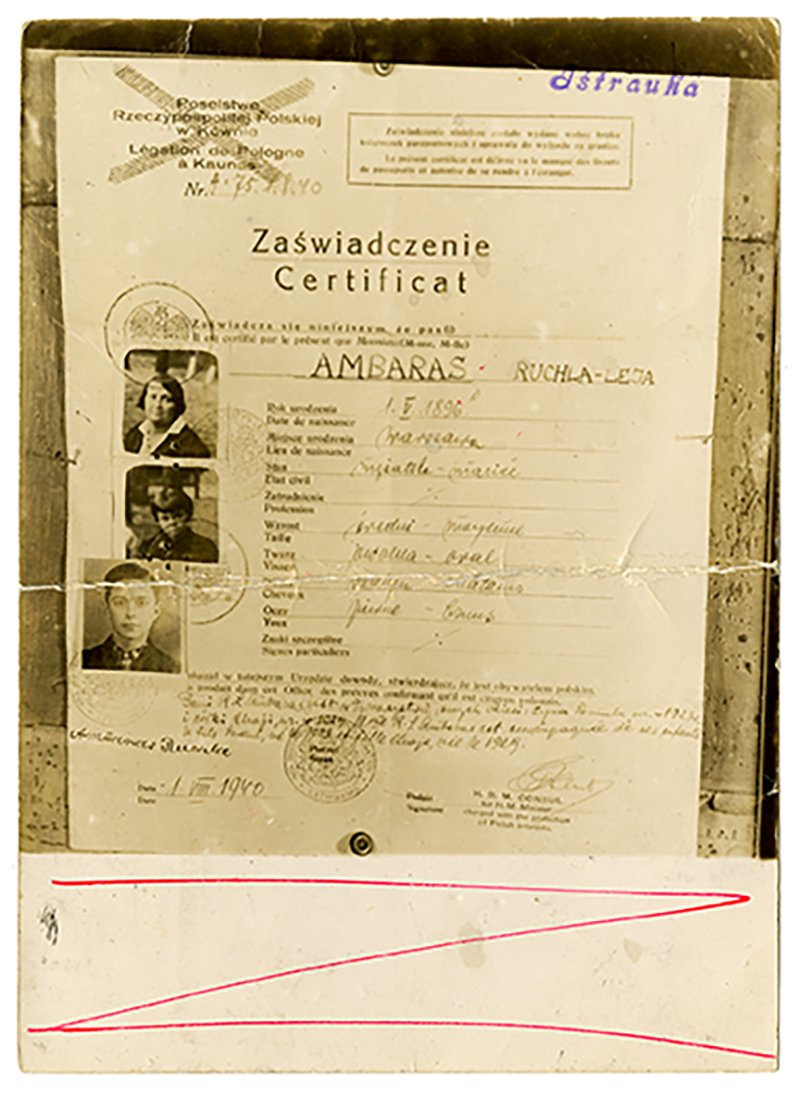Berek Ambaras and Ruchla Leja Spektor were married in Warsaw, Poland in 1918. They had two children, Samuel, born in 1923, and Chaja, born in 1929. Berek was active in the Bund and was secretary of the leather workers branch until 1939. Upon the Nazi invasion of Poland on September 1, 1939, the family knew that it was time to leave the country. Shortly after the invasion, Berek left Warsaw by train and arrived in Vilna, which was transferred from Poland to Lithuania in October 1939 due to the German-Soviet Pact. In Vilna, Berek lived in a refugee hostel and was employed as the hostel’s manager. In August 1940, the family was reunited, as Ruchla, Samuel, and Chaja arrived in Vilna.

It was around this time that the family obtained visas from Chiune Sugihara, the vice-consul of the Japanese Consulate in Kovno (Kaunas), Lithuania. Sigihara wrote between 2,100 and 3,500 visas in July and August 1940 for refugees who were desperate to get out of Europe. He also ensured that recipients of the visa were able to obtain tickets on the Trans-Siberian Railway. The Ambaras family traveled to Moscow, where they saw Berek’s brother and his family before traveling on the Trans-Siberian Railway to Vladivostok in January 1941. From Vladivostok, they traveled by boat to Tsuruga, Japan, and finally on to Kobe.
The Ambaras family likely arrived in Kobe in March 1941, after what must have been an incredibly long and stressful journey. Kobe maintained a small but active Jewish community, which was largely made up of businessmen and also Jews who fled Russia due to the Russian Revolution. Jewish refugees found some form of comfort in Kobe due to assistance from the existing community and recall kindness, curiosity, and a lack of antisemitism from the Japanese citizens of Kobe. Refugees generally arrived in Japan without clear plans for a further destination, and many spent stressful weeks and months visiting consulates and attempting to get to the United States, Canada, or other safe countries.
With war in the Pacific clearly on the horizon and increased military activity in Kobe, Japan expelled the Jewish refugees to Shanghai, in Japanese-occupied China from August to October 1941. The Ambaras family left Kobe by ship to Shanghai on September 17, 1941, where thousands of German and Austrian Jewish refugees were already living. After the attack on Pearl Harbor, Japanese control of Shanghai became more harsh and beginning in 1943, Jewish refugees were required to live within a designated area.

The Ambaras family stayed in Shanghai until January 1, 1949, when they came to New York via San Francisco. They left Shanghai on the SS General Meigs, a former troop ship that was converted into a passenger ship at the end of the war. The verso of the card below notes that “former troop ships … in their present condition are not representative of normal, luxurious American President Line service.”
![Embarkation card of Ruchia [sic] Ambaras, 1949](https://d3k74ww17vqc8e.cloudfront.net/app/uploads/2020/11/04161456/2009_A_296_dm1_embarkationcard.jpg)